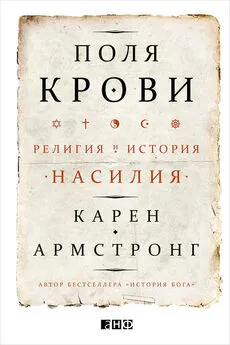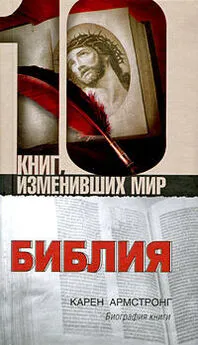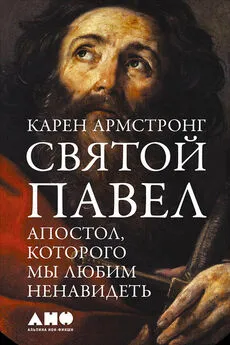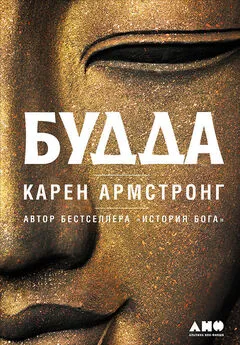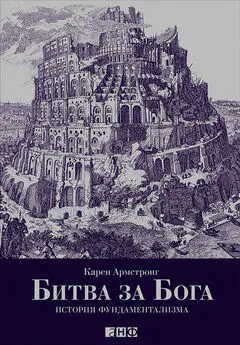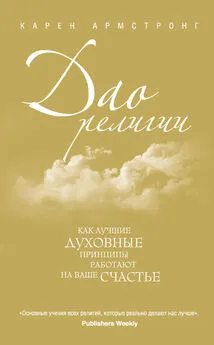Карен Армстронг - Поля крови. Религия и история насилия
- Название:Поля крови. Религия и история насилия
- Автор:
- Жанр:
- Издательство:Array Литагент «Альпина»
- Год:2016
- Город:Москва
- ISBN:978-5-9614-4082-9
- Рейтинг:
- Избранное:Добавить в избранное
-
Отзывы:
-
Ваша оценка:
Карен Армстронг - Поля крови. Религия и история насилия краткое содержание
Поля крови. Религия и история насилия - читать онлайн бесплатно ознакомительный отрывок
Интервал:
Закладка:
Шан цзюнь шу ; см.: Graham, Disputers of the Tao , p. 290
401
Сюнь-цзы , 15.72. см.: перевод в:. Watson, ed. and trans., Hsun-Tzu: Basic Writings (New York, 1963)
402
Ibid.
403
Ibid., 10; см.: Graham, Disputers of the Tao , p. 238
404
Хань Фэй ; см.: перевод Уотсона. [Перевод А, И. Иванова. Здесь и далее цит. по: Иванов А. И. Материалы по китайской философии. – СПб., 1912. – Прим. пер .]
405
Ibid.
406
Ching, Mysticism and Kingship , p. 171
407
Сюнь-цзы , 21: 34–38. см.: перевод в: Xunzi, Basic Writings , trans. Barton Watson (New York, 2003)
408
Fairbank and Goldman, China , p. 56; Derk Bodde, ‘Feudalism in China’, in Rushton Coulbourn, ed ., Feudalism in History (Hamden, Conn., 1965), p. 69
409
Сыма Цянь, Исторические записки , 6.239 (Сыма Цянь. Исторические записки. – М.: Худлит, 1956.)
410
Ibid., 6.87
411
Lewis , Sanctioned Violence , pp. 99–101
412
Сыма Цянь. Исторические записки , введение. Цит. по: Lewis, Sanctioned Violence , p. 141
413
Schwartz, World of Thought , pp. 237–53
414
Lewis, Sanctioned Violence , pp. 145–57; Derk Bodde, Festivals in Classical China: New Year and Other Annual Observances during the Han Dynasty, 206 BC to AD 220 (Princeton, 1975)
415
Lewis, Sanctioned Violence , p. 147
416
Сыма Цянь. Исторические записки , 8.1, in Fung Yu-lan, Short History , p. 215
417
Fung Yu-lan, Short History , pp. 205–16; Graham, Disputers of the Tao , pp. 313–77; Schwartz, World of Thought , pp. 383–406
418
Fairbank and Goldman, China , pp. 67–71
419
Joseph R. Levenson and Franz Schurman, China: An Interpretive History – from the Beginnings to the Fall of Han (Berkeley, Los Angeles and London, 1969), p. 94
420
De Bary, Trouble with Confucianism , pp. 48–49
421
Янь те лунь , 19. см.: английский перевод в: De Bary and Bloom, Sources of Chinese Tradition , p. 223. [Перевод Ю. Л. Кроля. Цит. по: Хуань Куань, Спор о соли и железе (Янь те лунь). Т. II. – М.: Восточная литература, 2001. – Прим. пер .]
422
Hu Shih, ‘Confucianism’, in Encyclopaedia of Social Science (1930–35) IV, pp. 198–201; Ching, Mysticism and Kingship , p. 85
423
De Bary, Trouble with Confucianism , p. 49; Fairbank and Goldman, China , p. 63
424
Быт. 2:7–3:24
425
Быт. 3:17–19
426
Быт. 4:10–11
427
Быт. 4:17–22
428
Быт. 4:9
429
Быт. 12:1–3
430
Israel Finkelstein and Neil Asher, The Bible Unearthed: Archaeology’s New Vision of Ancient Israel and the Origins of its Sacred Texts (New York and London, 2001), pp. 103–07; William G. Dever, What Did the Biblical Writers Know and When Did They Know It? What Archaeology Can Tell Us About the Reality of Ancient Israel (Grand Rapids, Mich., and Cambridge, UK, 2001), pp. 110–18
431
George W. Mendenhall, The Tenth Generation: The Origins of Biblical Tradition (Baltimore and London, 1973); P. M. Lemche, Early Israel: Anthropological and Historical Studies on the Israelite Society before the Monarchy (Leiden, 1985); D. C. Hopkins, The Highlands of Canaan (Sheffield, 1985); James D. Martin, ‘Israel as a Tribal Society’, in R. E. Clements, ed., The World of Ancient Israel: Sociological, Anthropological and Political Perspectives (Cambridge, UK, 1989); H. G. M. Williamson, ‘The Concept of Israel in Transition’, in Clements, World of Ancient Israel , pp. 94–114
432
Finkelstein and Asher, Bible Unearthed , pp. 89–92
433
John H. Kautsky, The Politics of Aristocratic Empires , 2nd ed. (New Brunswick and London, 1997), p. 275; Karl A. Wittfogel, Oriental Despotism: A Comparative Study of Total Power (New Haven, Conn., 1957), pp. 331–32
434
Нав. 9:15; Исх. 6:15; Суд. 1:16; 4:11; 1 Цар. 27:10; Frank Moore Cross, Canaanite Myth and Hebrew Epic: Essays in the History of the Religion of Israel (Cambridge, Mass., and London, 1973), pp. 49–50
435
Cross, Canaanite Myth , p. 69; Peter Machinist, ‘Distinctiveness in Ancient Israel’, in Mordechai Cogan and Israel Ephal, eds, Studies in Assyrian History and Ancient Near Eastern Historiography (Jerusalem, 1991)
436
Подробнее см.: Yoram Hazony, The Philosophy of Hebrew Scripture (Cambridge, 2012), pp. 103–60
437
Norman Gottwald, The Hebrew Bible in Its Social World and in Ours (Atlanta, 1993), pp. 115, 163
438
Лев. 25:23–28, 35–55; Втор. 24:19–22; Gottwald, Hebrew Bible , p. 162
439
Об этом процессе см.: мою книгу: A History of God: The 4,000-Year Quest of Judaism, Christianity and Islam (London and New York, 1993). (Армстронг К. История Бога. 4000 лет исканий в иудаизме, христианстве и исламе. – М.: Альпина нон-фикшн, 2014.)
440
Пс. 73:13–14; 81:8; 94:3; 95:4сл.; 96:7; Ис. 51:9сл.; Иов 26:12; 40:25–31
441
Быт. 11:1–9
442
Быт. 11:9
443
Быт. 12:1–3. Строго говоря, Яхве повелел Аврааму удалиться из Ура, расположенного на территории нынешнего Ирака. Фарра, отец Авраама, покинул Ур, но добрался только до Харрана. Однако впоследствии Яхве объяснит, что вся миграция была вдохновлена им. Он скажет Аврааму: «Я… вывел тебя из Ура Халдейского» (Быт. 15:7)
444
Hazony, Philosophy of Hebrew Scripture , p. 121
445
Ibid., pp. 122–26
446
Быт. 12:10
447
Быт. 26:12–22; ср. 36: 6–8
448
Быт. 41:57–42:3
449
Быт. 37:7
450
Быт. 37:8
451
Быт. 37:10
452
Быт. 41:51
453
Быт. 41:48–49
454
Быт. 47:13–14, 20–21
455
Быт. 50:4–9. После смерти Иакова братьям разрешили похоронить отца в Ханаане. В Ханаан они отправились в сопровождении большой свиты с колесницами и кавалерией, а их дети и собственность оставались заложниками в Египте
456
Быт. 12:15; 20:2; 26:17–18; 14:11–12; 34:1–2; Hazony, Philosophy of Hebrew Scripture , pp. 111–13, 143
457
Быт. 14:21–25
458
Быт. 18:1–8; 19:1–9
459
Быт. 18:22–32
460
Быт. 49:5–7
461
Быт. 49:8–12; 44:18–34
462
Исх. 1:11, 14
463
Исх. 2:11
464
Hazony, Philosophy of Hebrew Scripture , pp. 143–44
465
Исх. 24:9–11
466
Исх. 31:18
467
Ср. Исх. 24:9–31:18; William M. Schniedewind, How the Bible Became a Book: The Textualization of Ancient Israel (Cambridge, UK, 2004), pp. 121–34
468
Напр., Суд. 1; 3:1–6; Ездр. 9:1–2
469
Regina Schwartz, The Curse of Cain: The Violent Legacy of Monotheism (Chicago, 1997); Hector Avalos, Fighting Words: The Origins of Religious Violence (Amherst, NY, 2005)
470
Mark S. Smith, The Early History of God: Yahweh and the Other Deities in Ancient Israel (New York and London, 1990); Smith, The Origins of Biblical Monotheism: Israel’s Polytheistic Background and the Ugaritic Texts (New York and London, 2001)
471
Нав. 24; S. David Sperling ‘Joshua 24 Re-examined’, Hebrew Union College Annual 58 (1987); Sperling, The Original Torah: The Political Intent of the Bible’s Writers (New York and London, 1998), pp. 68–72; John Bowker, The Religious Imagination and the Sense of God (Oxford, 1978), pp. 58–68
472
Исх. 20:3
473
Susan Niditch, War in the Hebrew Bible: A Study of the Ethics of Violence (New York and Oxford, 1993), pp. 28–36; 41–62; 152
474
Ср. аналогичную сделку в Числ. 21:2
475
Нав. 6:20
476
Нав. 8:25
477
Нав. 8:28
478
Lauren A. Monroe, Josiah’s Reform and the Dynamics of Defilement: Israelite Rites of Violence and the Making of a Biblical Text (Oxford, 2011), pp. 45–76
479
Стела Меши , 15–17. см.: текст в: Kent P. Jackson, ‘The Language of the Mesha Inscription’, in Andrew Dearman, ed., Studies in the Mesha Inscription and Moab (Atlanta, 1989), p. 98; Norman K. Gottwald, The Politics of Ancient Israel (Louisville, 2001), p. 194; ср. 4 Цар. 3: 4–27
Читать дальшеИнтервал:
Закладка:
